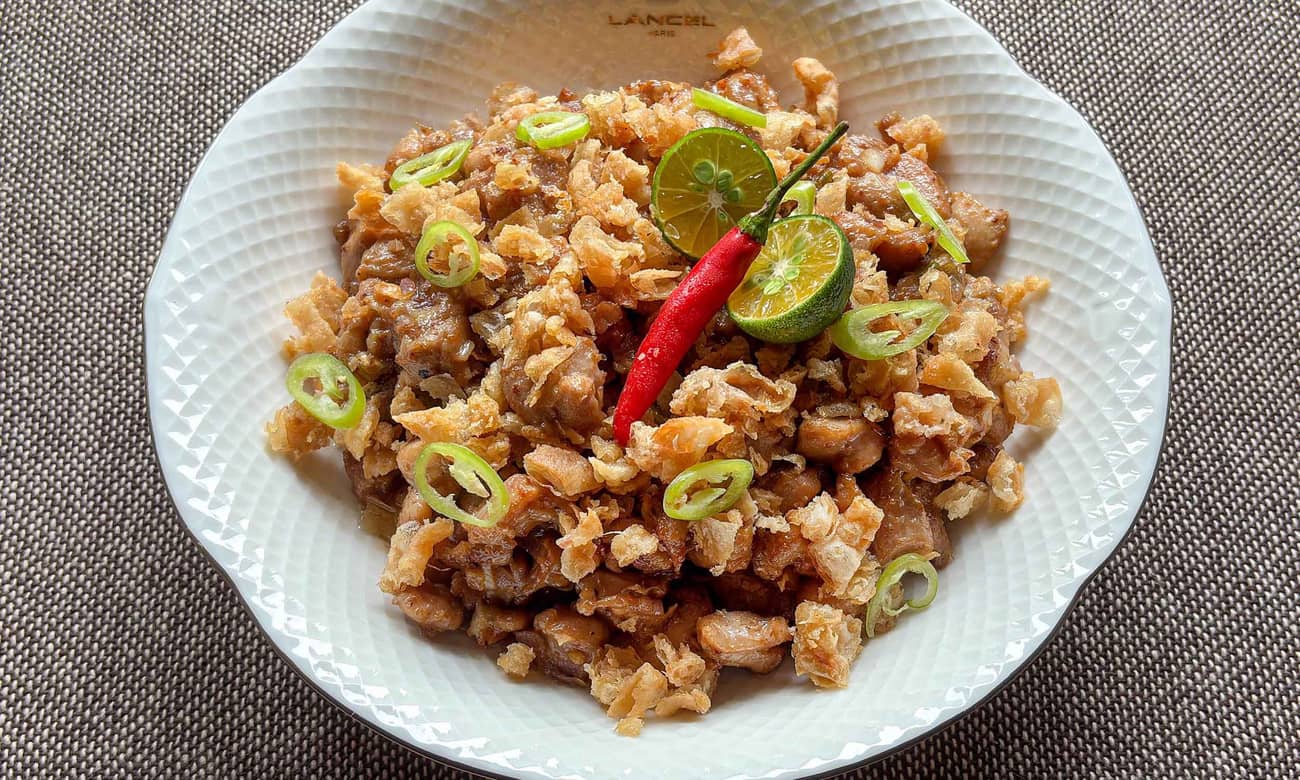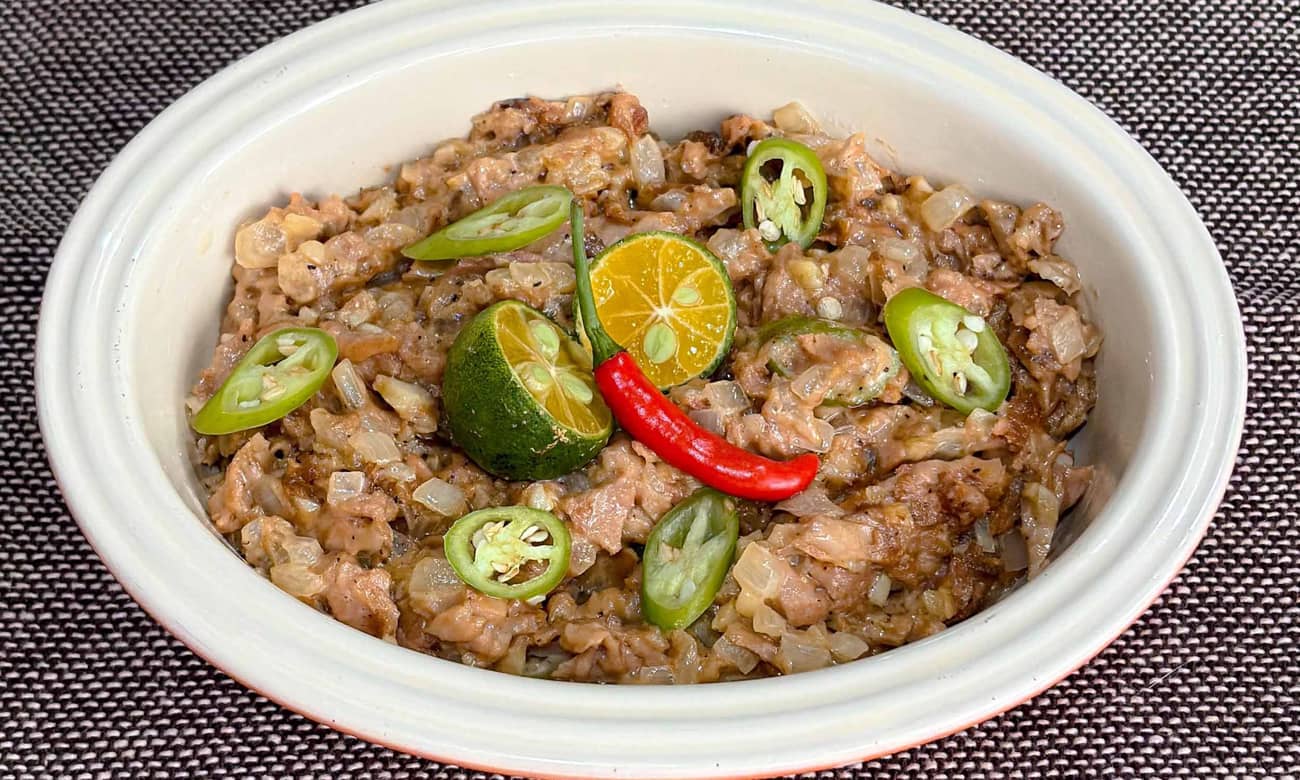
If you think Bicol Express isn't spicy enough, make it the Bicol way: less pork, reduced coconut cream, and more tongue-numbing chilies.
In the 1970s, restauranteur Cely Kalaw came up with a tamer alternative to her best-selling spicy laing. Some say that for inspiration, she looked to a spicy Bicolano stew of chilies and coconut milk: sinilihan, also known as ginataang sili or gulay na lada. Kalaw added pork to the originally meatless dish, then introduced it at her restaurant under a catchier name: Bicol Express.

Bicol Express is a spicy Filipino stew made with two signature ingredients of Bicol cuisine: fiery-hot chilies and creamy coconut milk. Cely Kalaw, who is widely credited for inventing and popularizing the dish, named it after the old railway connecting Manila and Albay.
When Bicol Express exploded in popularity, the new name eventually found its way back to Bicol. Soon, Bicolanos started calling their native sinilihan Bicol Express, too. But some differences exist between Kalaw's and Bicol's versions.
You can think of Bicol Express as the cover of a song that blew up and became more popular than the original. Some will claim that sinilihan is the "original" song—the version Bicolanos people grew up and are more familiar with.
Which version is better? That's a matter of personal preference. Despite different arrangements, both sing the same delicious, spicy, coconut-flavored song.
Let's look at what sets Bicolano sinilihan apart from Manila-born Bicol Express:
Coconut milk spoils very quickly because of its high moisture content. When a moist environment is present, it can breed bacteria and cause spoilage.
It's why coconut milk labels tell you to use all of it ASAP once opened. If you leave it out at room temperature, it will start going bad in about two hours.
Before groceries and canned coconut products, traditional sinilihan used freshly extracted coconut cream. Without any stabilizers, it spoiled even faster than canned cream.
Cooks found that cooking off the coconut cream's excess moisture made sinilihan last much longer. To do that, you need to simmer the stew until the cream split into oil and water. The water—the moist environment bacteria love—would then cook off and evaporate, leaving a coconut-flavored oil.
If you've made Bicol Express before, sinilihan is just as easy to make. Cook up a big batch and serve with heaps of hot steamed rice. If you start to sweat and can't feel your tongue, it means you made it right!
Prepare shrimp paste: Using clean hands, squeeze fresh shrimp paste over a bowl to drain it of its brine. Discard brine and set drained shrimp paste aside.
Cook pork: Add the sliced pork belly to a cold pan. Place the pan over medium-low heat, slowly rendering the fat from the pork. Cook pork in rendered fat until browned, about 8–10 minutes.
Cook aromatics: Add onions and garlic. Cook in the pork fat until soft and fragrant. Add the shrimp paste and chilies, then cook for 1–2 minutes.
Simmer and serve: Pour coconut cream into the pan. Reduce heat to low and simmer mixture until the oil separates from the cream, 25–30 minutes. Serve with hot rice.
If not using pork belly, you can use kasim (shoulder) or pigue (leg/ham)—just make sure to cook them until tender.
You can also use ground or more finely chopped pieces of pork, as some people do!
Yes you can! The switch won't affect the flavor, but because coconut milk is thinner than cream, you'll get a more runny consistency in your final dish.
We don't recommend using powdered coconut cream. Its flavor tends to be sweet and artificial, which works alright for sweet applications but not so much for savory dishes.
It's also difficult to get the right consistency and flavor out of powdered cream. Save yourself the trouble and go for the canned stuff. You can also make DIY cream from fresh coconut milk, if you prefer.
Of course! We highly recommend it. Fresh coconut cream works very well in coconut-forward dishes like this one. You'll taste an all-natural, coconut-y sweetness in your sinilihan—nothing too overpowering or artificial-tasting.
To make it, you need:
To make fresh coconut cream: Place grated coconut in a large bowl. Add enough warm water to moisten the coconut meat. Using both hands, squeeze meat to extract the coconut cream. Pass coconut cream through a sieve or cheesecloth to remove stray pulp. Use cream as directed, or store in the fridge in an airtight container for 2–3 days.
If you want it spicier, add more siling labuyo (red chilies). Make sure to add the seeds—that's where most of the spiciness comes from.
If you want it less spicy, you can either remove the seeds from the chilies, reduce the amount of siling labuyo, or both. Or you can try using just siling haba, which is less spicy than siling labuyo.



